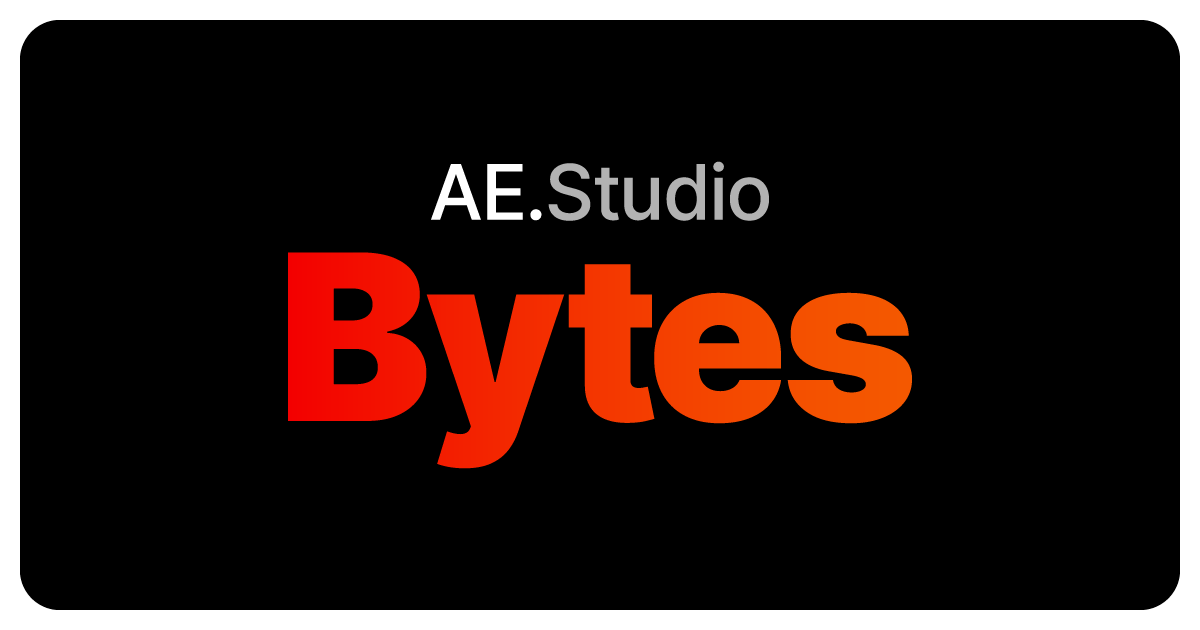- AE Studio Bytes
- Posts
- BCIs aren’t just on the way... they’re already here!
BCIs aren’t just on the way... they’re already here!
From clinical trials to store shelves — here’s how we’re pushing BCI research forward


When you think about brain-computer interfaces (BCIs), what image springs to mind?
For most people, it’s a vision of a far-off future — one where getting a chip implanted into your head is as easy and common as owning a smartphone.
Sounds like a pipe dream?
Maybe not.
Because the truth is…
BCIs are already here!
Our team at AE Studio has been working with companies who are developing and implementing BCI tech right now, to help people with disabilities to regain their autonomy.
This tech allows disabled users to:
Help people with spinal cord injuries or ALS to control a mouse cursor (or even robotic arms) with their mind
Type onto a computer just by imagining handwriting
And even translate their thoughts to speech
These devices are poised to change millions of lives for the better.
But before this clinical-grade tech can make its way onto store shelves, there are some big gaps still to cross.
Our work with Blackrock Neurotech and Forest Neurotech
The biggest challenge that top BCI research organizations and their labs face today is processing and understanding the neurodata they gather from the brain.
Two such companies we’ve worked with are Blackrock Neurotech and Forest Neurotech.
We helped both of them to create information pipelines to collect, test, and interpret data from participants using implanted BCI sensors.
On that front, their process looked very similar.
But when it came to the technology behind their BCI, each company took a radically different approach.
Blackrock uses a “standard” BCI, which requires physical access to the brain through a tiny device (a few millimeters square) with needles poking into the brain.
Whereas Forest uses ultrasound — which is standard in other biomedical fields, but brand new for neurotech!
This way, the BCI sits within, or even outside, the skull, and can measure and influence the entire brain.
Each type of device tackles problems in the brain in different ways.
Blackrock’s BCIs are built to give users fine motor control over a device like a robotic arm, and Forest’s BCIs are better suited to global tasks in the brain, like curing depression or epilepsy.
What’s coming in the (not-so-distant) future
We also recently worked with NextSense to help develop brain-sensing earbuds (coming soon), which use EEG to track your sleep and focus.
This device looks so promising that even big companies like Apple have taken notice, and may start implementing similar tech with their own earbuds.
It might not be long before consumer-grade tech can monitor your emotional state and attention span, and show you those metrics on your phone.
The future of BCIs is still uncharted.
But the future of human agency has never looked brighter.
Which is why our team at AE Studio is doing their part to ensure that future BCI tech continues to be developed in an ethical way that elevates people’s health and happiness.
This was just a brief intro into our work in the BCI field, and we’ll do deeper dives soon.
If you’re a founder, visionary, or leader with an urgent technical challenge on your hands…
AE Studio offers world-class teams of specialists (with expertise spanning nearly every field) ready to take on your project from start to finish.
No recruiting, training, or hiring headaches necessary — we’ll give you flexibility and fast results, guaranteed.
We’re here to:
Act as your CTO, guiding your project with seasoned expertise
Drive end-to-end product creation, from concept to launch
Deliver clean, efficient code that performs (and grows with you)
If you’d like us to take a look at your idea, just drop us a line here.
In the meantime…
Keep an eye out for more AE Studio Bytes every Tuesday and Thursday!
